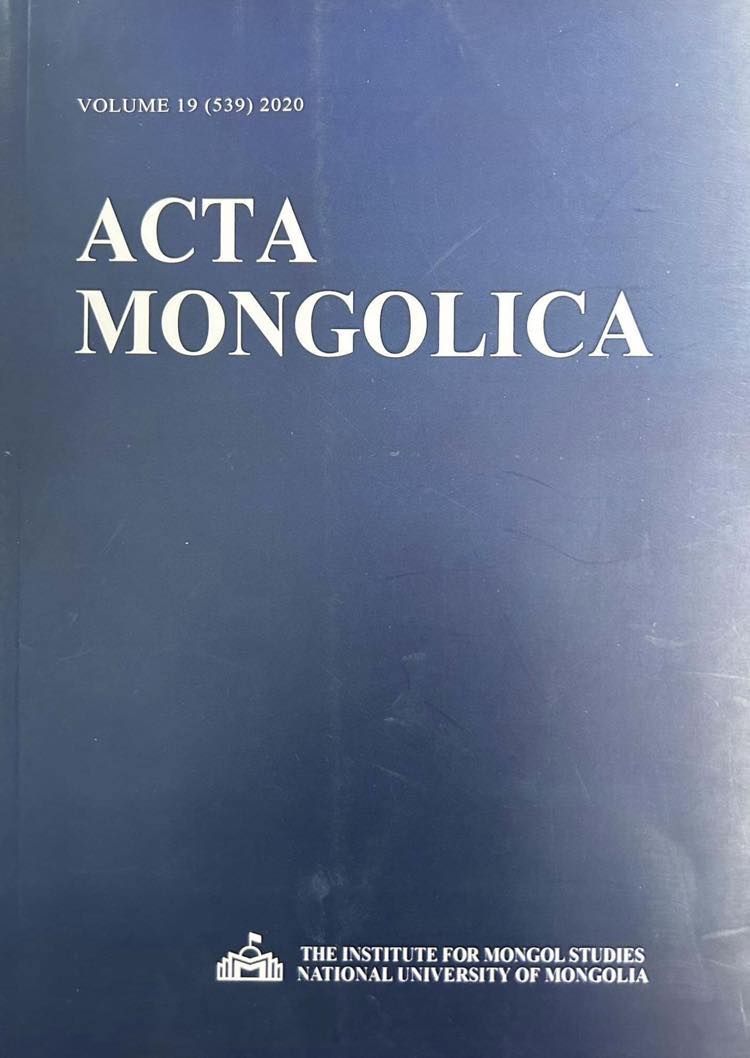Tradition in Baasanjav’s Art Rethinking Buddhist Iconographies in Contemporary Mongolia
Main Article Content
Abstract
The question of tradition is a key topic in contemporary works of Asian artists. This article focuses on selected artworks by the Mongolian artist Baasanjav Choijiljavin (b. 1977) to analyze how some aspects of traditional Tibetan Buddhist iconography and motifs are appropriated and reused in contemporary art. Baasanjav was trained in the traditional style of Mongolian painting known as Mongol Zurag but has pioneered new trends in Mongolian contemporary art which contribute to the debate first instigated in the study of anthropologist Uradyn Bulag and historian Li Narangoa (2006). Bulag/Narangoa examined the transformation of Mongol culture as “alter/native modernity” in times of “divided urbanism–pastoralism.” Baasanjav’s sharp criticism of corrupt neoliberalism in Mongolia and the use of Buddhist iconography for political messages was unprecedented in Mongolia in 2009, yet common in the works of contemporary Tibetan artists such as Gonkar Gyatso and Tenzing Rigdol. Baasanjav’s works inspired many Mongolian artists to use Buddhist motifs and iconographies in their paintings to point at the Mongolian state’s cultural, social and environmental decline. The article discusses how Baasanjav creates new iconographies of Buddhist motifs and figures based on and inspired by his innovative interpretation of traditional motifs, style, and visual idioms for conceptual shift of Mongol Zurag imagery.
Article Details

This work is licensed under a Creative Commons Attribution-ShareAlike 4.0 International License.
References
Demos, T. J. “Contemporary Art and the Politics of Ecology: An Introduction” in Third Text 27, no. 1 (January, 2013): 1–9.
Dierkes, Julian,. ed., Change in Democratic Mongolia: Social Relations, Health, Mobile Pastoralism, and Mining. Leiden: Brill, 2014.
Gaonkar, Dilip Parameshwar. ed., Alternative Modernities.Durham, NC: Duke University Press, 2001.Harris, Clare. In the Image of Tibet: Tibetan Painting After 1959. London, 1999.
Narangoa, Li and Ole Bruun. eds., Mongols From Country to City: Floating Boundaries, Pastoralism and City Life in the Mongol Lands. Copenhagen: Nordic Institute of Asian Studies, 2006.
Smith, Neil. “Nature as Accumulation Strategy” in Leo Panitch and Colin Leys eds., Coming to Terms with Nature. Socialist Register 2007 Series. New York: Monthly Review Press, 2006.
Uranchimeg, Tsultemin, Mongolin Orchin Uyeiin Dursleh Urlagiin Eh Survalj, Barimt Bichguud [Primary Documents of Mongolian Art Associations]. Ulaanbaatar: BCI Publishing, 2018._
_________. “Mongol Zurag: Nyam-Osoryn Tsultem (1923–2001) and Traditional-style Painting in Mongolia” in Orientations, 48, no. 2 (March–April 2017), Hong Kong: 135–142.
__________. “Political Ecology in Baatarzorig’s Art: Mongolia Is in Business” in Rebecca Empson and Hermione Spriggs eds., Five Heads (Tavan Tolgoi) Art, Anthropology and Mongol Futurism. Berlin: Sternberg Press, 2018, 105–119
__________. Tsherin Sherpa: Meditation on Art and Life as Metamorphosis in Uracnhimeg ed., Metamorphosis: Recent Painting and Sculpture by Tsherin Sherpa. Herron School of Art and Design, IUPUI, 2020.

